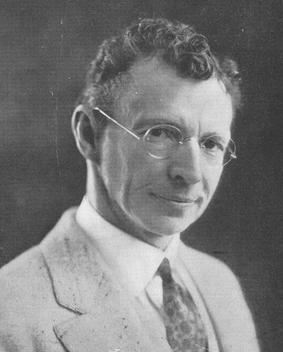William D. Coolidge facts for kids
Quick facts for kids
William D. Coolidge
|
|
|---|---|
 |
|
| Born | October 23, 1873 Hudson, Massachusetts, U.S.
|
| Died | February 3, 1975 (aged 101) Schenectady, New York, U.S.
|
| Nationality | American |
| Alma mater | University of Leipzig Massachusetts Institute of Technology |
| Known for | his contributions to the incandescent electric lighting and the X-rays art |
| Awards | IEEE Edison Medal (1927) Hughes Medal (1927) Faraday Medal (1939) Duddell Medal and Prize (1941) |
| Scientific career | |
| Fields | Electrical engineering |
William David Coolidge (born October 23, 1873 – died February 3, 1975) was an American physicist and engineer. He made very important discoveries that helped improve X-ray machines. He also played a big role in developing the "ductile tungsten" wire, which is super important for light bulbs.
Coolidge was a director at the General Electric Research Laboratory. He also became a vice-president for the company.
Contents
Early Life and Education
William Coolidge was born on a farm near Hudson, Massachusetts. He studied electrical engineering at the Massachusetts Institute of Technology (MIT) from 1891 to 1896.
After working as a lab assistant for a year, he went to Germany. There, he continued his studies and earned his doctorate degree from the University of Leipzig. From 1899 to 1905, he worked as a research assistant at MIT.
Making Better Light Bulbs
In 1905, Coolidge started working as a researcher at General Electric's new research laboratory. He did many experiments there. These experiments led to a big change in how light bulbs were made.
He found a way to make tungsten metal "ductile." This means it could be easily stretched into very thin wires, called filaments. These thin tungsten wires were perfect for the inside of light bulbs. He made ductile tungsten by cleaning up tungsten oxide.
Starting in 1911, General Electric began selling light bulbs that used this new metal. These new bulbs quickly became very popular and earned a lot of money for GE. Coolidge received a patent for this invention in 1913. However, a court later decided that his patent was not valid as a new invention in 1928.
Improving X-ray Machines
In 1913, William Coolidge invented the Coolidge tube. This was a much better X-ray tube. It had an improved part called a cathode. This new tube made it possible for doctors to see inside the body more clearly. They could better see deep parts of the body and even tumors.
The Coolidge tube also used a tungsten filament. It was a huge step forward for the new medical field of radiology, which uses X-rays to look inside the body. He got a patent for this invention in 1916. The basic design of his X-ray tube is still used today! He also invented the first X-ray tube with a spinning part called a rotating anode.
Awards and Recognition
William Coolidge received many awards for his important work.
- In 1914, the American Academy of Arts and Sciences gave him the Rumford Prize.
- He was chosen to be a member of the United States National Academy of Sciences in 1925.
- In 1927, he received the American Institute of Electrical Engineers Edison Medal. This was for his work on electric lighting and X-rays. He had actually turned down this award in 1926 because of the court ruling about his tungsten patent.
- He also received the Howard N. Potts Medal in 1926 and the Louis E. Levy Medal in 1927.
- In 1938, he was elected to the American Philosophical Society.
- He was awarded the Faraday Medal in 1939 and the Franklin Medal in 1944.
- In 1963, the city of Remscheid gave him the Röntgen Medal. This was for inventing the hot cathode X-ray tube.
- Just before he passed away in 1975 at 101 years old, he was chosen for the National Inventors Hall of Fame.
Later Career and Retirement
Coolidge became the director of the General Electric research laboratory in 1932. In 1940, he became a vice-president of General Electric. He retired in 1944, but he continued to work as a consultant for GE even after retiring.
See also
 In Spanish: William Coolidge para niños
In Spanish: William Coolidge para niños

